Roleplaying in an established fictional world, what can go wrong?
But it didn’t!
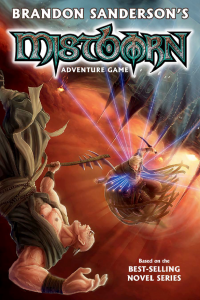
The Mistborn Adventure Game is Crafty Games’ well-put effort to translate the world of Brandon Sanderson’s Mistborn series of (excellent) fantasy novels into a roleplaying game. It’s hard to write such a niche product, one which seemingly requires the reader to be both a roleplayer and a fan of a specific book series. Such a product is usually written in one of two ways: either it tries to convince the fans of the series that they should consider trying this “roleplay” thing, while being quite plain for regular roleplayers; or it goes the other way around, providing lots of intricate setting-specific details that roleplayers are unlikely to enjoy unless they also immerse themselves in the novels. If the writers are really ambitious, they might go for a third option, trying to create a system of rules which complements not only the magic of the novels but also evokes a playing experience in sync with the style of the novels.
It’s really weird how the Mistborn Adventure Game managed to do all three, without tripping on any of the pitfalls.
Who do We Play, and Why
The world sucks, hard. Active volcanos rain ash over everything, the sun hides behind thick clouds, nothing is green and everyone is miserable. Oh, except for the nobles, who rule the skaa (read: slave) population with an iron fist, only to be themselves ruled with a steel fist by The Lord Ruler, an immortal tyrant who’s been maintaining this status quo for a thousand years.
Someone should do something about all of this suffering. This world needs heroes!… But it only has you. Scoundrels, thieves and con men, with the occasional renegade noble. You have hope, you have drive, and you better be dashing or clever or quick.
You guys will form a Crew to go on daring heists in city streets and nobles’ mansions, each of you hoping to accomplish the Destiny you set for yourself. It’s going to be a dramatic ride, full of twists and turns; as the book says, “you’ll guide [your Crew] in desperate schemes and struggles and against the villains and harships of the Final Empire. You’ll make friends and enemies, enjoy epic triumphs and suffer vicious setbacks.” The rules will take care of that.
How it Works
Let’s talk mechanics. There’s really quite a lot of interesting things to talk about.
You have three Attributes: Physique, Charm and Wits. You also have three Standings, all of which can change dramatically during the game, seeing as they describe potentially perishable assets: Resources, Influence and Spirit. Finally, you have three Resiliences, in the form of Health, Reputation and Willpower, which allow you to try and prevent some serious harm coming your way.
When you want to do something that’s either interesting or dangerous, you roll a number of six-sided dice (d6) equal to an Attribute or a Standing. If you’ve got some magic in you, you might instead roll that magical ability’s Power, but we’ll get to that later. You’re looking for matches – two or more dice with the same result. The task might also have a Difficulty, between 1 to 5, which is the kind of match you’re trying to get. A difficulty of 3, for example, means you must get at least a double 3 – ones and twos won’t cut it.
Nudges
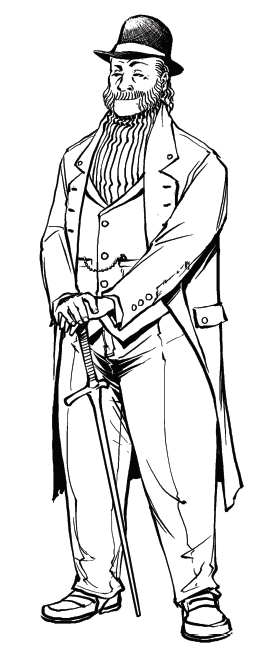
A roll of a 6 is treated differently. Every 6 provides you with a Nudge, a little advantage that can add to your successful results. It’s fun to get them, and it’s fun to use them. There’s a full list of Nudge options, but they can also be used in a more free-form manner to describe story developments. You might use a Nudge to push a barrel in the way of your pursuer, as you manage to outrun them around a corner, or you can perhaps add a funny remark after insulting the noble, to make everyone around laugh.
Oh, and if you failed the roll, Nudges can help you cancel any potential Complications. In the Mistborn Adventure Game, if you fail, you don’t just go “meh, okay” – the story continues in a new direction. Failing forward! This new direction is a Complication – something turns against you, or some ugly truth is suddenly revealed – and Nudges can help mitigate some of that.
Nudges immediately reminded me of Momentum from Conan (my review) and Advances from Star Wars and Genesys (comics explanation of the rules) – it’s a resource that’s generated by the dice, usable then and there to enhance the narrative.
Increasing Your Chances and Enhancing the Story
Let’s return to our dice roll. Considering that having a rank of 4 at an Attribute or Standing is quite impressive, getting even a single match is pretty hard, to say nothing of high-difficulty tasks. Therefore, you’ll be looking for the following to add more dice to your pool.
Traits
Traits are short descriptions or words that tell us something about your character. They are created during character generation by answering a series of questions that guide you down a specific path in order to create a solid background fitting the concept of the game, including a motivation for your life of crime, and what’s your unique position in your Crew.
If you can evoke a Trait in your action, you add a die. This is great, because it helps you feel like you’re playing the character you wanted to play, and get rewarded for it by having higher chances of success. Also, if a Trait seems to be detrimental to your action – you’ve got “Striking Beauty” and you’re rolling to try and disappear in a crowd – you’ll probably lose a die from your pool. The cool thing is, as a player, this seems very fair to me.
Even more interesting, everyone can activate anyone‘s Traits, even against you! This is important because of a special kind of Traits, called Burdens. Burdens are what happens when you get hurt – when you lose Health, Reputation or Willpower in large amounts. These are the lasting injuries, unforgettable public humiliation, and emotional scars. This sort of thing is very much up my alley, I like having my character hindered by a long-term effect. It’s an important part of any dramatic development.
Burdens work just like any other Trait, except that they can’t be used to remove a die from the dice pool, they can only provide a die. This seems insane on first look – injuries should hurt you, no? – but it’s in fact quite brilliant. Firstly, because of the fact that anyone can use everyone’s Traits, your enemies can make use of your weaknesses, which is both appropriate and cool – when your opponent in the tradesmen council brings up your humiliating faux pas in a speech she’s giving against you, it might be annoying, but it’s also dramatically satisfying. Call-backs are really powerful. Secondly, if you do manage to find a way to use “Broken Leg” with your own action, good for you for the imaginative solution! Fun all around. Thirdly, reducing dice pools is, generally speaking, not fun – it stops the game, instead of propelling it forward. If being “Socially Anxious” would make you lose a die whenever you try to talk to someone, you might never be able to do so, and nothing much will happen. The anxiety can be used against you by your enemies, and in a game that’s all about contests (see below), that’s really quite enough.
You’re actually encouraged to have a Burden affect you at least once every session, because that will provide you an Advance, which is the main way to increase your character’s abilities.
Traits remind me of the Aspects of Fate (comics explanation of the rules), but even more so, they’re very close to the tags from City of Mist (which I’m the editor of) – they are both descriptive of the fiction and can influence the fiction, and the Burdens are quite like Weakness tags in many ways. And just like in City of Mist, the rules give excellent advice on how to make sure that the Traits you create are both specific and useful.

Tools
Let us continue to the next sort of thing that can give you dice: Tools. If you have the right tool for the task at hand, you add a die. Now, there’s something really cool that the Mistborn Adventure Game does here: Some pieces of equipment, called Props, are considered so iconic to your character, that you are considered to always have them. If you lose a Prop, you’ll get it back by next adventure, maybe sooner. The cocky noble, always holding a glass of wine in her hand, is always holding a glass of wine in her hand. Not while crawling in the sewers, obviously, but when you meet her during a carriage ride? She’s got some wine and would love to share it over a chat.
If you bought a Prop during character creation, or with an Advance, you essentially say that we shouldn’t worry about this specific item, there’s no maintenance to be done here. No need to look for ways to purchase it, or worry about costs. It’s there, it’s part of the character.
This doesn’t mean you can just get whatever you want. In fact, getting things can be quite tricky, requiring some Resource rolls, perhaps even as a part of an ongoing contest. That’s because you’re never on the lookout for “+1 swords” – whatever it is you’re trying to get is probably important to your scheme, and so, its acquisition has dramatic potential.
Circumstances
If the circumstances are for or against you, you’ll add or remove dice from your pool – one die per two Circumstances. The Narrator has a full list of suggestions for what can count as Circumstances, and players are of course welcome to create Circumstances in their favour.
Challenges, Conflicts and Competitions
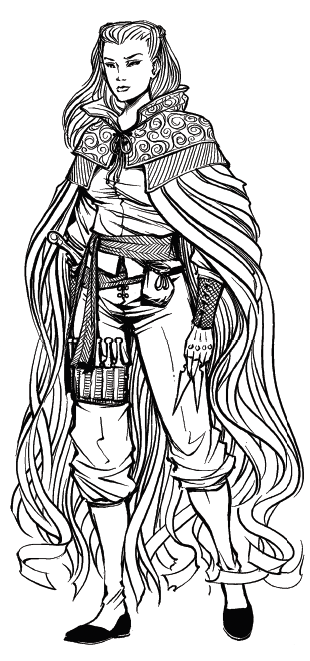
It’s time to roll the dice! You can never have more than 10 dice in your pool, any extra become automatic Nudges. You can never have less than 2 dice – any additional negative modifier worsen the Outcome (the difference between your results and the Difficulty) by one, leading to Complications.
There are three types of rolls – rolling against a thing, rolling against someone, and rolling to defeat someone – or in other words, Challenges, Contests and Conflicts. There’s a lot of great stuff going on with these, but in an effort to still have a readable review, I’ll cut through the (interesting, useful) distinction between them.
What you should know is that Conflicts are where the main action is, and boy-oh-boy is the book aware of that. There’s a whole chapter for each type of conflict: Physical, Social and Mental, with explanations on the type of weapons, tactics and Circumstances you might find in each. This game wants you to really go for it, to have deep and dramatic conflicts, with interesting Complications, Burdens, and the like. This is the sort of a game in which a combat scene is big deal, and not “Encounter #24: fight against five goblins”.
There’s a lot of elegance in these rules. Because there are already quite a lot of moving parts with every roll, the system does its best to avoid adding unnecessary, auxiliary mechanics. During Conflicts, you declare actions by order of Wits, high to low, then act in the opposite order, low to high. Changing your declared action invokes a penalty on your roll, which can be quite harsh. Whatever actions you’re planning on doing, you’ll only be making a single roll per turn, based on the most important action you’re performing, and any leftover Action Dice will become your Defense Dice to help you protect yourself until your next turn.
Perhaps the most elegant of all rules, however, is the Beat – described as just enough time for each character to do one significant action. All types of actions use Beats, whether it’s Steelpushing an iron nail into an enemy during a chase, or advancing your smear campaign against an enemy by distributing rumours in the skaa neighbourhoods. Beats change according to the dramatic needs of the story, but the rules that use them remain the same, allowing for immense flexibility in the pacing of the story without requiring different sets of rules.
Powers and Magic
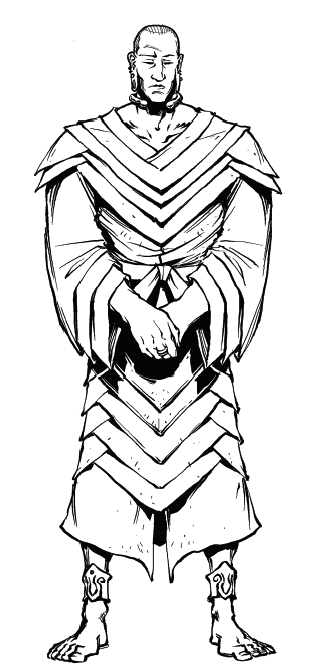
I kept from mentioning too many Mistborn-specific concepts thus far, assuming this review will mostly be read by RPG hobbyists, but now I really must turn to all of you Mistborn enthusiasts.
Guys, they have everything in here. A full quarter of the book is dedicated to all of the metals, describing all known uses of them. This is mind-boggling spoilerific if you’re not caught up to the second trilogy. You can have all of the Feruchemist powers. You can be a Mistling or a full-on Mistborn, with all metals, and there’s even a new one. You can be a kandra. You can have Hemalurgy spikes. The Alloy of Law expansion adds Ferrings and Twinborn. You can go wild.
Back to you, RPG hobbyists!
The Mistborn “magic” system is all about metals. Some people can swallow them and “burn” them to achieve specific, cool effects – pulling or pushing metals, Soothing or Rioting emotions, increasing strength or senses, etc., and the mere knowledge of the uses of some rare metals is a big part of everything’s that going on in the world, and probably in your game as well. There are also other, vastly different ways to use metals, but I won’t get into the details, because you should really read the books. You don’t need to, in order to play the game – the rulebook provides you with all the information you’ll ever need, including summaries of what happened in the novels – but you should, because they’re great.
Using Powers is just like doing anything else – you roll your Power and add or subtract dice based on Traits and Circumstances (and occasionally, tools) – with some notable exception. First, each Power works in a unique way, with specific rules on the ways it can be used and what effects it might create in the fiction. That might sound cumbersome, but generally speaking, most people have access to only one or two Powers, if at all. Second, each Power has special uses for Nudges, allowing you to do some cool things and tweak the results in your favour. You can also buy cool Power Stunts, tricks that you’ve learned and give you an edge over others with this Power. Finally, there might be unknown uses to your Powers… there’s always another Secret.
The Narrator’s Magnificent Chapter
In the Mistborn series of novels, secrets are a Big Deal. In the Adventure Game, Secrets are, indeed, a big deal. The Narrator creates some as he spread the canvas for the Crew’s upcoming jobs, and there’s some excellent advice on how to Secret and what to Secret.
“Excellent Advice” is an ongoing thread throughout the entire book. When should we roll the dice? There’s a whole page on that, but it can be summarised as “When there’s a challenge, and also, if you can imagine what would happen if they fail”. Yes! Correct! In the Conflicts chapter, there’s a whole section about how to describe the ongoing action, aimed at the potential storyteller – who is encouraged not to be the Narrator, but a player who’s not participating in the action, in case there is such a person. Nice! Yeah!
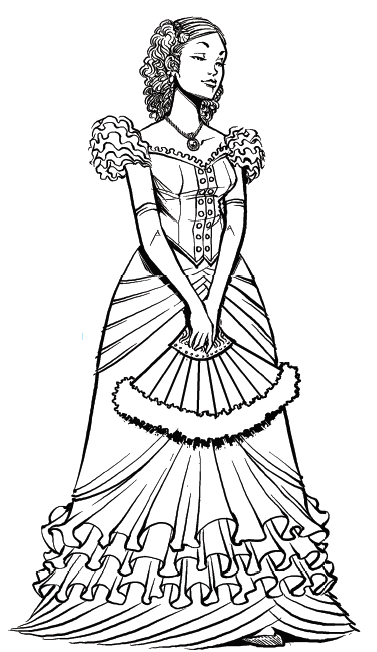
There’s a healthy approach to roleplaying in general, from the get-go. The default assumption of the game is that we all tell the story, and each of us has veto on some aspects of it. For example, players have veto on all fictional additions regarding their characters. Similarly, the rulebook takes care to specify that only the Narrator can define Difficulty Level. This might seem like a strange thing to expressly write down, in a veteran roleplayer’s eyes, because that’s just how it should be, no? But in this book, the Narrator’s job is not defined as “controlling all the rules and basically being god”. The Narrator has some special privileges, yes, but remember: the default here is “we all tell the story”, so if one of the participants have special fictional power, it should be specified. The game never forget it’s own definition as a collaborative storytelling experience.
Finally, there’s also a lot of good advice on how to play in an established setting. It’s a huge topic that deserves special attention (we did a whole episode about it), but many games that are based on established fiction seem to neglect it. Not here. The Narrator’s chapter suggests you think about “what if things were different”, how to make existing stuff feel like “yours”, how to create new stuff that still feels familiar. There’s a whole chapter on creating adventures – or “building a story” as they call it – going through how to create an ongoing plot that has the same feel as the things that happen in the novels. There’s a Scheme Worksheet, with questions for the Narrator to answer, to help them create the basis for a heist. When it suggests you add a twist, well, what makes a good twist? Here are a few thoughts for you to consider. When picking allies – how to make sure they don’t undermine the heroes? Here’s a paragraph on that. Really good stuff here.
Other Cool Stuff
Here’s a selection of other parts of the game that I find worthy of mentioning.
Breathers are a short or long break from the action. You might find them similar to short and long rests from D&D, but they’re not defined by specific times – long breathers can certainly reflect the passage of several weeks. Breathers are meant to be used between peaks of action and drama, serving the same purpose as they do in any good story. They also act like the Montage move in City of Mist, allowing the Crew to recover and get themselves ready. This is also when you spend Advances to expand the scope of your character.
Destiny and Tragedy are the two story-aware aspects that each player decides for their character – what she wishes to eventually happen (even if she won’t admit it to herself) and what sort of depressing background shaped her outlook on the world. Both of these might change – nothing is set in stone – but their mere existence provides a solid possible story arc for the character, and the Narrator gets lots of good advice on how to handle both the established Tragedy and the coming Destiny in service of the character’s personal story and the Crew’s ongoing story as a whole.
The book’s formatting and layout are excellent, although your taste may vary regarding its size – it’s squat and thick. The content is structured well in clearly marked chapters, the readability is impressive, especially since there are a lot of page references and repeated content; the book’s really good at getting you to understand what’s going on, which is important because there are a lot of moving parts. Examples are exhaustive and ubiquitous.
Let’s Sum Up
What does it feel like, playing the Mistborn Adventure Game? In a way, it’s like Blades in the Dark, but from a vastly different angle. Both games will allow you to feel like a badass yet flawed partner in a criminal crew acting in a cool city, going on various enterprises, as part of a long-term plan, in a living, exciting world. Blades gives you some simple tools and say “go nuts, stories will emerge”. Mistborn gives you a robust toolbox and says “follow this, you’ll get drama”. Both systems do what they do very, very well.
Mistborn is the sort of game in which you can, and quite probably will, spend long hours around the table planning a heist, break a leg in a fight, succumb to violent mood swings, try to change local laws, collect dirt on your opponents, ask for a hint and chase after Secrets, and maybe stab yourself with a tin spike. There are rules for all of this, they are basically the same, and they work.
If you’ve read the Mistborn books, then you’re ready to sit down and play this Adventure Game, to dig deeper into Scadrial and its mysteries, during the days of the Final Empire and beyond. If you’re a roleplayer, you definitely should point yourself toward the closest copy of The Final Empire (or the whole trilogy) and get yourself immersed enough to jump on this wagon. Finally, if you’re into good gaming in general, you should probably get a copy anyway, because there’s a lot to learn from what’s happening in the Mistborn Adventure Game.
You can download a hefty preview of the game for free, right here.
All of the disclosures:
Most links to DriveThruRPG are affiliate, which means I get a bit of money if you buy through them, with no added cost to you.
This review was created after Gamerati approached me and suggested it, but they didn’t provide any material – as a Sanderson and Crafty fan, I already had the corebook.
I was the editor for the Hebrew edition of Little Wizards, another RPG by Crafty.